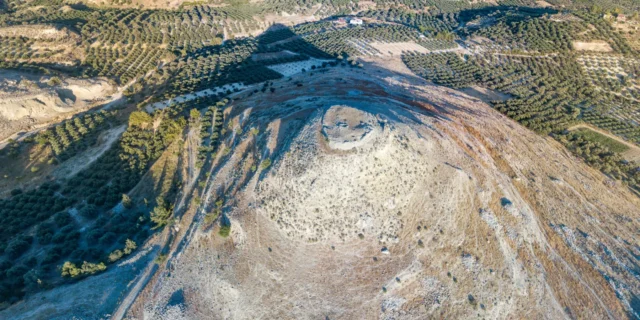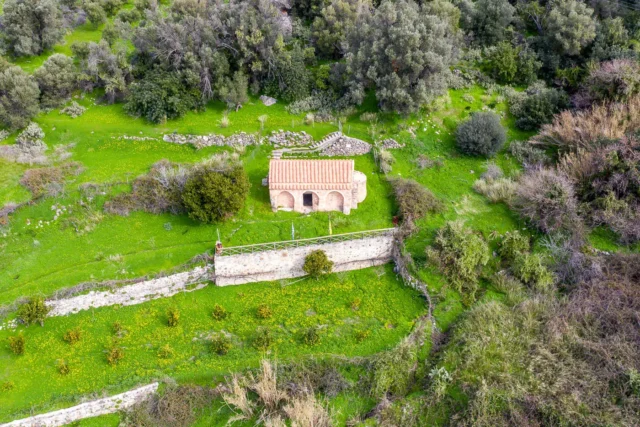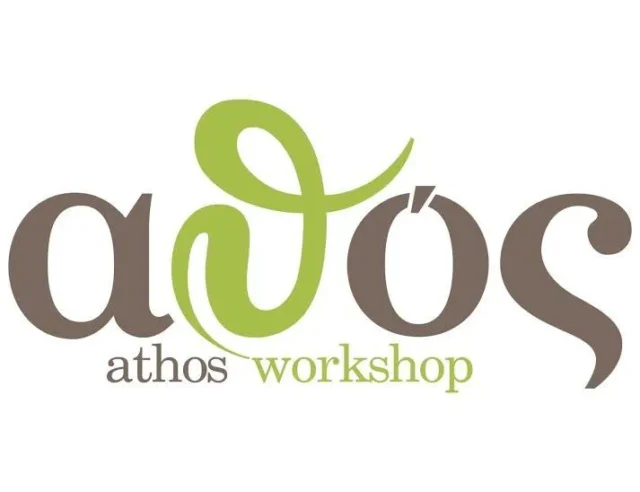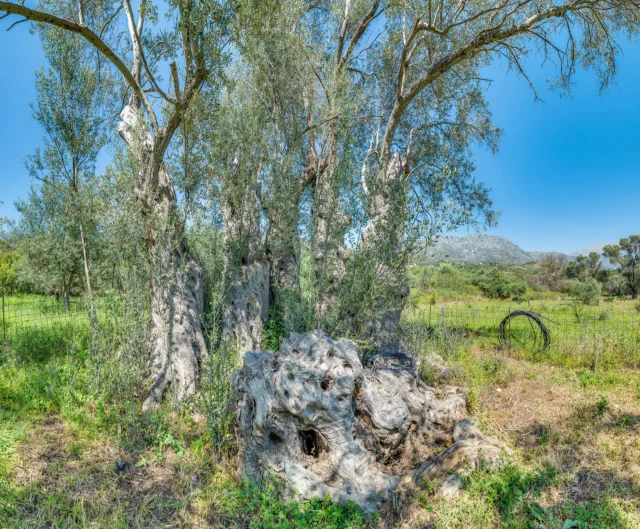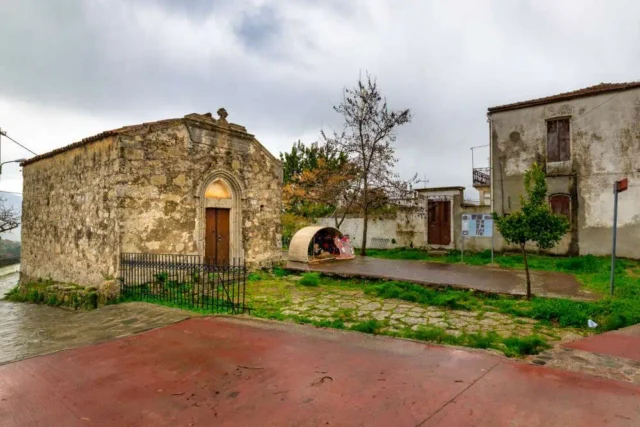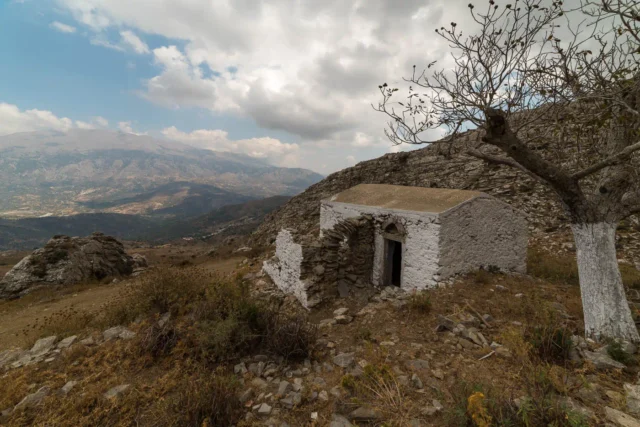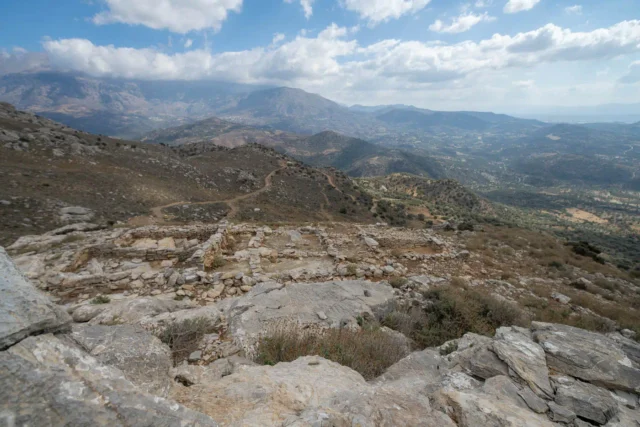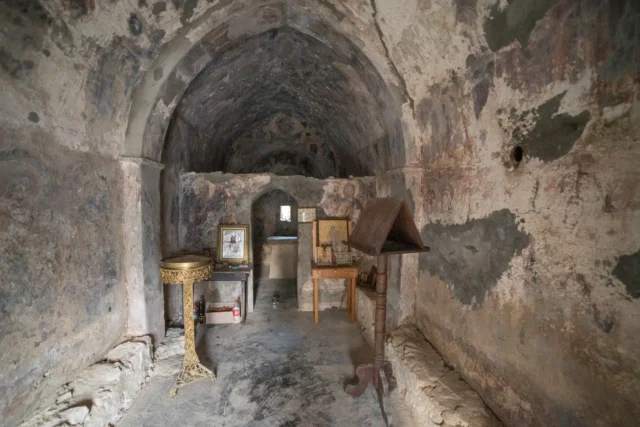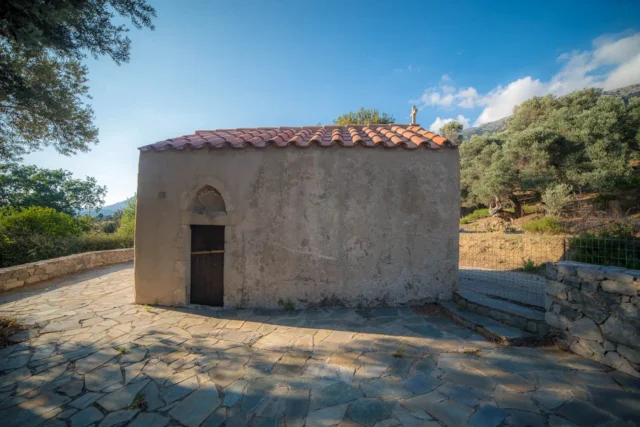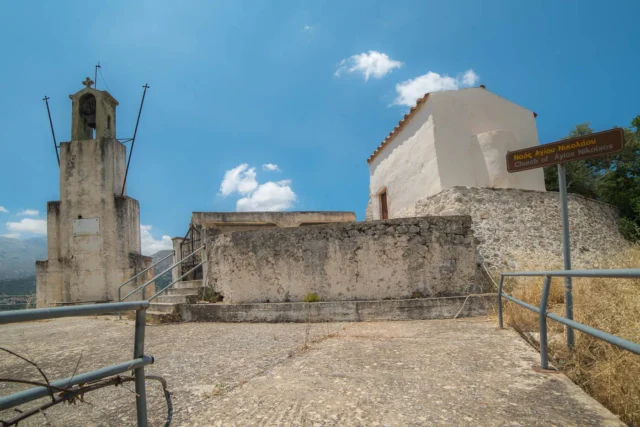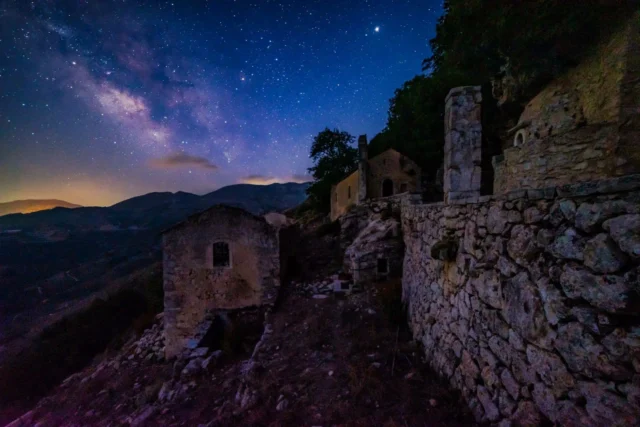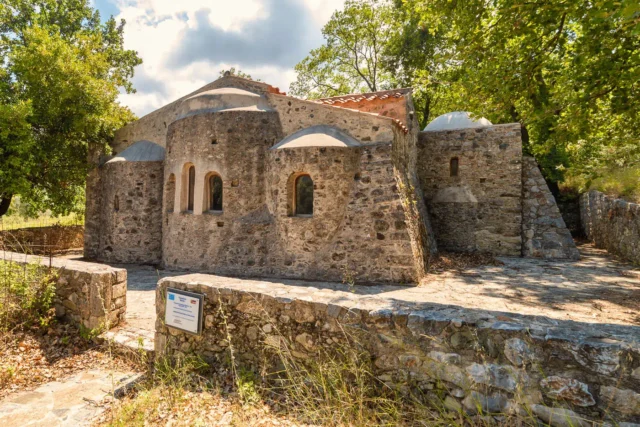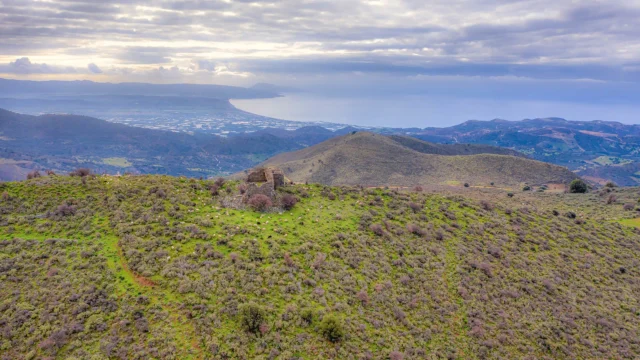829
listings found
Categories
Active filters:
Castel Nuovo (Kasteli Messara)
Castel Nuovo, a 1206 Genoese fortress, stands in ruins on Psilo Kasteli, near Phaistos, Crete. Constructed by Enrico Pescatore, its strategic hill location offered views of Messara. Built on the ancient Aina site, it played a role in Cretan revolts against Venetian rule, including the Two Syvritos (1230-1236) and Kallergis (1363-1367) revolts. The fortress, also briefly reoccupied during the Cretan War (1645-1669), is the namesake of Kainourgiou province. Today, wall and cistern remnants mark the historical landmark, offering insights into Venetian-era Crete.
Katharo plateau
Situated in the Dikti mountain range of Lasithi, Crete, 26km from Agios Nikolaos, this plateau rests at 1150m altitude. Its waters flow via the Havgas Gorge to the Lasithi Plateau. Human activity dates back to the Minoan era. Ownership was historically disputed between Lasithi and Kritsa residents, eventually awarded to Kritsa after legal battles documented in Greek and Turkish archives; a legend involves a Turkish judge and the site "Kadi's Pit". Today, it's primarily used for cultivating potatoes, apples, and vineyards by Kritsa residents who lease the land. Access is via paved road from Kritsa through an oak forest, or dirt roads from Lasithi Plateau and Malles Ierapetras; the E4 trail also passes through. Points of interest include the Avdeliakos settlement, the Chapel of Afentis Christos, and Kadi's Pit. The area offers cool summer temperatures, hiking opportunities, and hosts the annual Shepherd's Festival after August 15th.
Agios Georgios Xifoforos
Agios Georgios Xifoforos, a mid-13th-century Byzantine church located near Apodoulou in Crete's Amari region, boasts well-preserved frescoes and a single-aisled, barrel-vaulted architecture. Dedicated to Saint George (Xifoforos), the church exemplifies Byzantine art and religious traditions. Its frescoes offer valuable insights into the cultural and artistic practices of the era. The church's history, potentially linked to a monastery, remains partially unclear. Today, it serves as a place of worship and pilgrimage, open to visitors interested in Byzantine architecture and religious art.
Ancient Syvritos
Ancient Syvritos, located on Thronos Kefala hill, dates from the Late Minoan III period to the early Venetian era. It was a significant Cretan city-state, known in Linear B tablets as "su-ki-ri-ta," with its own currency and territory spanning the Amari valley to Soulia port (Agia Galini). The city, a bishopric by 451 AD, features ruins of an acropolis, houses with mosaics, and water infrastructure. Artifacts, including coins depicting Dionysus and Zeus, are housed in the Rethymno Archaeological Museum, reflecting Syvritos's role in Minoan, Geometric, Archaic, Classical, Hellenistic, Roman, and Byzantine periods. The city declined by the late 8th century, leaving ruins that offer insight into Crete's history.
Panagia of Thronos
The Church of Panagia in Thronos, Crete, a single-nave Byzantine structure from around 1300 AD, stands on a 5th-6th century Early Christian basilica. Its interior features 14th-15th century frescoes and the Kallergis family coat of arms, reflecting Byzantine patronage. The church's location on Kephala hill, ancient Syvritos, highlights its strategic importance, controlling access to Phaistos and Gortyna. Thronos itself, with roots in the Late Minoan period, was a significant Roman and Byzantine center, serving as the seat of the Bishopric of Syvritos. The church remains active and open to visitors, showcasing well-preserved artistic and historical elements.
Agia Marina Kalogerou
Located in Kalogeros, Rethymno, Crete, the 14th-century Agia Marina Church is a Byzantine structure built in 1300 AD, evidenced by an inscription. It houses a rich collection of frescoes depicting scenes from the life of the Virgin Mary, the Christological cycle, the Pantocrator, and numerous saints. The church's interior frescoes, notable for their vibrant colors and carved haloes, have undergone restoration by the Ephorate of Byzantine Antiquities, though some deterioration persists. The exterior remains unrestored, covered in plaster and whitewash. Situated within the village cemetery, Agia Marina offers insights into the artistic and religious traditions of the Amari region during the Byzantine era, and its artistic style suggests connections to other regional churches. The village of Kalogeros, known for its traditional architecture, celebrates Saint Athanasios and Cyril on January 18th.
Agioi Theodoroi church in Amari
The Agioi Theodoroi Church, located in Nefs Amari, Crete, is a small, single-aisled structure with a tiled roof. Its construction date is unknown, but frescoes dated 1588 and 1731 indicate it predates the later date. The church features a bell tower depicting the Virgin Mary and is dedicated to Saints Theodore of Tyro and Theodore Stratelates, celebrated on the first Saturday of Lent. While the church remains standing, the frescoes are in a state of disrepair.
Mycenaean Acropolis of Ornes
The Mycenaean Acropolis of Orne in south Crete offers a glimpse into the Late Bronze Age. Discover its fortifications, buildings, and artifacts, and learn about its historical significance.
Agios Onoufrios
Agios Onoufrios Church, constructed in 1329/1330 near Genna, Amari, Crete, is a single-aisled, barrel-vaulted Byzantine chapel with a semi-circular apse.
Built by the Varouchas family, its frescoes, dating to its construction, depict religious scenes like the Deesis, Annunciation, and Crucifixion, showing connections to the Macedonian School. A rare, well-preserved stone templon and glazed ceramic plates decorate the entrance. The church's artistic style links it to other regional churches, such as those in Margarites, Chalepa, Lampiotes, and Apodoulou.
Agios Antonios in Veni hill
Agios Antonios cave sanctuary, situated on Veni Hill in Amari, Rethymno, Crete, reveals a blend of Minoan, Byzantine, Venetian, and Ottoman history. Originally a Minoan worship site, it evolved into a Byzantine monastery dedicated to Agios Antonios. It served as a refuge for Cretan rebels, earning the name "Pnyka of Crete," and faced Ottoman attacks. The site is linked to Arkadi Monastery and features a holy spring, monastic cells, and remnants of past monks. Currently under restoration, the cave holds ancient clay basins and celebrates Agios Antonios' feast day. The location offers views of the Psiloritis range, reflecting Crete's spiritual and resistance heritage.
Panagia Kera
Panagia Kera, near Nefs Amari, is a 15th-century three-aisled basilica, constructed over a 13th-century cross-in-square church, potentially an earlier Apollo temple site. This Byzantine masterpiece features frescoes, including the Dormition of the Virgin and Ascension, and the Kallergis family coat of arms, linking it to the Venetian period. Once a monastery katholikon under Moni Asomaton, it stands amidst ancient olive groves, with remnants of its past visible in the sanctuary and surrounding area, reflecting Crete's rich historical layers and cultural influences.
Koules in Vathiako
Explore the Koules in Vathiako, a ruined Ottoman fortress in Crete, and learn about its role in controlling the island and protecting the Muslim village










